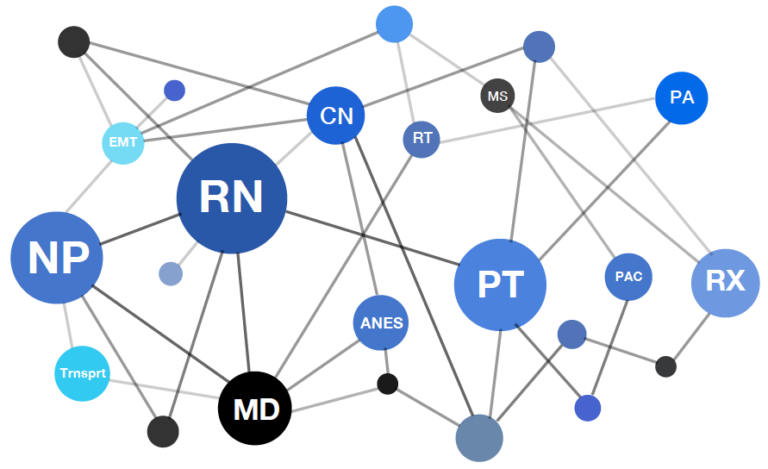Metcalfe’s Law states that the value of a telecommunications network is proportional to the square of the number of connected users of the system (n2). In other words, the more people and devices connected to your network, the more valuable that network becomes. Mathematically, every time you double (2X) the number of active users on your network, you quadruple (4X) the networks value.
In practical terms, every time you enable a mobile clinician via a smartphone equipped with Clinical Communication & Collaboration (CC&C) software, you are using Metcalfe’s Law to your advantage and enhancing the value of your hospital’s network. We’re going to add a couple of our own corollaries to Metcalfe’s Law based on our real-world experience in deploying CC&C networks in both large and small hospitals.
The first is known as the “Test & Go Axiom.” For hospitals, this means you should “Test” the technology and assess both its capabilities and usefulness in your facility – preferably with well-defined success criteria – but once you decide that the technology has substantial value, then ‘Go” quickly and decisively to cover the entire facility. Not only will this corollary help you maximize value per Metcalfe’s Law above, but there is very practical and historical precedent that should be followed.
Think back to when the first desk telephones were made widely available within hospitals (1930s – 1940s). This new technology allowed clinicians and other hospital staff to communicate successfully and easily even when they were not in close proximity to one another. The learning experience for these first phone users was that this new technology’s functionality and benefits were limited unless they could reach everyone in the hospital. You never saw a telephone deployment ignoring a floor or a functional area as even the most remote hospital locations would have at least one desk phone that could be shared amongst users. Without this complete coverage, a new phone user would easily become exasperated with not being able to reach needed colleagues. This would not only lessen the value per Metcalfe’s Law, but also hinder telephone adoption as users stopped using the new devices out of frustration.
Bring this same thinking forward to your mobility deployment. If your smartphone users are only a subset of your mobile staff, then you risk re-learning the lessons of 75 years ago. So, follow the lead of our ancestors and deploy CC&C using the “Test & Go Axiom.”
Next, is the most powerful corollary, known as the “Too Great for Users Conundrum.” This can best be understood via a recent conversation with an executive at a hospital that was considering a mobility deployment. We were asking the facility if they had selected a smartphone to pilot for their users and this executive replied that all of the devices they had seen so far were “too user-friendly” and that the hospital was looking for a less elegant device for their staff. When asked why this was important, the executive replied, “We’re afraid that the clinicians will like these smartphones so much that we won’t be able to take the devices away, if needed.” We literally ended the meeting and walked out knowing that this hospital is not ready for a deployment. If leadership is concerned that the users will “enjoy using the new technology too much,” it’s clear that they do not value their network and its potential impact. So if you are concerned that introducing new CC&C technology is “too good for your clinicians,” then you have Metcalfe’s Law working against you and your hospital.
The laws of GRAVITY, ELECTRICITY and MAGNETISM, and THERMODYNAMICS have all been used to great benefit for those who know how to work with them and not try to frivolously fight them. Put Metcalfe’s Law to work for you and your hospital in the same manner and make your network as valuable as possible.


